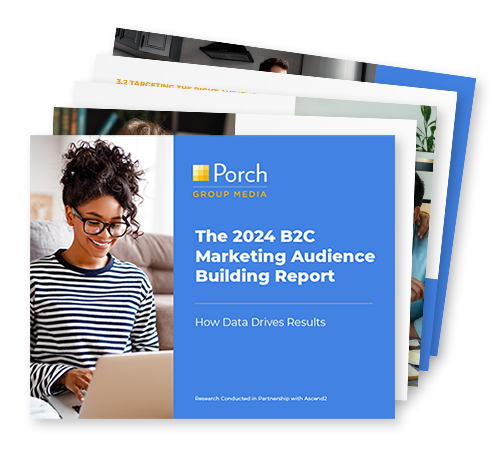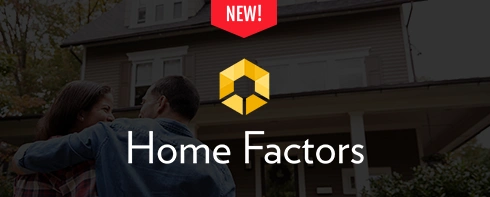As marketers and brands, we often hyper-focus on customer acquisition so much that we lose sight of the importance of customer retention. Retaining current customers is less expensive, requires less time and investment, and creates higher margins and profitability.
Understanding the data, life event changes, signals, and insights that highlight retention opportunities is key to swinging the pendulum toward retention improvement. Studies show that even as little as a 1-5% improvement in retention can boost bottom-line margins significantly.
Our guest speaker, Rick Lang, former Chief Marketing and Sales Officer of Comcast and current Head of Global Cable Sales at Afiniti, an AI company, focuses retention on “the little hinges that swing a big door.” In this podcast, Rick will share his lessons learned on the 4 advantages and methods of focusing on customer retention – and it all begins with analytics, data, and insights.
[Podcast] Part 1: 4 Advantages & Methods of Focusing on Customer Retention
Speakers

Speaker
Rick Lang
Head of Global Cable Sales
Afiniti

Host
Luci Rainey
Former Marketing Executive
Comcast & PODS
*The following transcription has been adapted from the 4 Advantages & Methods of Focusing on Customer Retention podcast
LUCI
As marketers, we often hyper-focus on growing brand demand gen, and ultimately new customers. So much so, that sometimes we forget that keeping our current customers is less expensive, requires less time and investment, and creates higher margins and profitability.
Depending on the size of your company, improving retention or reducing customer churn, as some people call it, by as little as 1 to 5%, can improve margins or the bottom line specifically.
Welcome everyone to Movers and Shakers. I’m today’s host, Luci Rainey. I’m excited for today’s guest who is the former Chief Marketing and Sales Officer of Comcast and current head of Global Cable Sales at Affinity AI, who, throughout his career has long focused on retention using the moniker, “the little hinges that swing a big door”. Welcome Rick!
RICK
Thank You, Luci.
How to Use AI to Improve Customer Retention
LUCI
Rick, I think most of the folks today probably understand what a CMO of Comcast is responsible for, you know, keeping the acquisition engine going, driving new internet customers, or retaining them, but tell us what you’re doing these days at Affinity AI. AI seems to be the hot ticket right now.
RICK
Yeah. Thank you.
And, obviously, as you said, at Comcast, the retention focus and all of that as, well, I’m sure we’ll get into a lot more of it later. As everyone knows, obviously, AI right now is a really hot topic.
Affinity has actually been doing it for, you know, probably 13, 14 years now. So, you see a lot of it on TV, and it’s going to take over the world, and, certainly there are applications.
One of the things that our company tries to do is maximize the interactions between a call center agent and a consumer or customer.
How does that better use AI to predict which agents, and which people might have better outcomes than the old-fashioned way of finding the longest person waiting in a queue to talk to an agent? I get the first available agent, and that might not be the most optimal pairing.
So, the AI kind of looks through huge datasets and says that these particular matches may be more optimized.
So usually it’s, you know, 4, 6, 8 percentage points better on whatever metric the company or a client wants to optimize on. So, it’s very interesting, it’s cutting-edge stuff. I’m really way too old to be into it but, at the end of the day, it’s fascinating because we have a couple thousand employees, and the vast majority of them are data scientists that just work on the models.
It’s not, I know in the movies and on television and in the media today, it’s sort of a black box and it just kind of lets it go, but there is quite a bit of actually doing the models, doing the machine learning the protocol of that. So, it’s a fascinating field, and it’s really great to be in that space after 35 years in the cable business.
LUCI
So yeah, it’s interesting using AI actually to help produce better retention or churn outcomes for companies. So, essentially you’re still in the retention business overall.
RICK
It’s funny.
Customer Retention Strategies
LUCI
Yeah, and what are these “little hinges that swing a big door”, I mean? I’ve known you for a long time and this is definitely a mantra that you’ve used over the years. And I think it definitely applies to retention.
RICK
Absolutely, I mean, I think if you look at retention, you look at a couple of things in your business.
From an acquisition standpoint, I would make the argument that retention actually begins at the point of acquisition, but you have to look at what are, and I use the analogy – I’m trying to remember who first said it – but the little hinge that swings the big door. And that’s the piece of the business you need to work on that can have the biggest impact.
You know, you can work on a lot of different initiatives, but for me, retention is always paramount to what you need to do to drive your business goals.
Because at Comcast, I can just refer back to that. We obviously need to do acquire because we had a lot of people that moved and disconnected and so, you had to really keep the acquisition engine going. And to the extent that that was, you can only go so far there. You really, really the focus on retention was, was really key.
And that’s one that think everybody probably on the call and in the audience, you need to, you need to really focus on how can I not necessarily retain when somebody’s actually leaving, but keep an ecosystem in place that makes them not want to go anywhere else to transact business with any of your competitors.
LUCI
Great. So let’s jump right in, Rick. There are so many important things about retention, and you’ve actually already touched on a couple of them. Revenue stability, it’s the first place to fix a leaky bucket, and it can be up to five times less expensive to save a customer versus onboard a new one.
Brand advocacy and loyalty, lower customer churn creates higher brand advocacy, and think about when you really have strong advocacy. You get your referrals, your natural word of mouth. But when advocacy goes really wrong, for example, like in the recent case of Budweiser losing 4.5 billion dollars, market cap. You know, things can really go sideways, quickly, so customer retention, again, from the point of acquisition, driving brand advocacy, is also very important. Gaining feedback and insights, and also, a focus really directs companies to invest in customer experience in terms of service, product upgrades, loyalty, events, and rewards for example our airlines, typically invest in these things.
But again, the investment is earmarked specifically for retention. So, you know, so many, so many important things about retention. Where do we get started, Rick, with your 30 years plus of experience? And I know you also do a bit of consulting in this area.
For the folks who have joined us today, where would you, suggest they start? Where do they get started?
RICK
Well, I think Luci, that is obviously a very comprehensive question when you look at the entire ecosystem of retention. You know, a couple of the big pieces are why do people leave you? But I think it also becomes, how do you begin the product journey?
You know, so everywhere along that journey, you’re making sure that the customer finds value in what you’re doing, and how you build the relationship.
And to your point, it’s very difficult to, if you make a fairly large mistake, pay for it in the marketplace. And even if you make small mistakes along the way, you pay for it in the marketplace.
So, you know, like we talked about from the initial conversations of when somebody comes in the door or purchases your product, or subscribes to your service. You always have to begin with even that very initial piece is, “What are you doing to with the whole goal, the whole mindset?”
And you brought it up a minute ago, Luci.
Which is, it is far, less expensive and costly to your business in terms of business impact and churn and all of the associated pieces to keep somebody happy and keep them a customer and have them not make other purchase considerations kind of within your sphere. So, that’s a big one.
You know, you look at a lot of different dimensions, it’s what service am I providing and what are the breakpoints? I know we’re going to talk a little bit about, kind of the market segments, but I think if you look along the continuum of the customer life cycle and the customer journey, and you say, “What are the critical moments within that?”
Whether it’s, when they first want to do business with you, how is the friction? Can I interact with you in the way and place that I want to interact with you?
And so all those things start to build up kind of a reputation. And I’d like to brand really simple. You know, I think, we use the term like Amazon. I mean, there’s a, there’s a classic example of somebody from a retention standpoint, just gets it, right. Because it is frictionless. It’s two clicks and I’m done.
You know, I don’t have to worry about it, I don’t think about it. A lot of satisfaction in that interaction. But, I think, to the extent data, I mean, having great data is really critical, because you can’t, you don’t want to, kind of, the analogy of bowling with a curtain front of the pins. And you roll and it’s like, well you got three. It’s like, OK, well, which three? I don’t know.
And so, having good data in your customer ecosystem is really important.
Because how can you get the pulse of what’s going on? You really need to have a great mechanism to get feedback from the customer. Where are the interesting service interaction breakdowns? What are they thinking?
How are they moving through the life cycle and how are you best nurturing that along the points? So, if you think about a kind of a timeline or a calendar, T-minus 30 before they come on. Day one, what does that look like? And what does the journey look like in the mapping? And then you find out when people leave the ecosystem or leave your product, or don’t, repeat purchase, you know, what are the rationale? What is the reason for that?
There’s some that’s uncontrollable, you know, I use cable for an example.
Somebody gets transferred somewhere or they move and you, you don’t serve, Boise, Idaho so there’s nothing you can do and that’s the piece, but a lot of times, there are things that you can do.
And so I think, you know, getting good robust feedback in data on that is really important.
Monitoring Your Customer Retention Dopper Radar
LUCI
I think you covered a lot. There’s so much to cover. I think, one place, again, we like to really give our staff, our folks here, tangible things to look at and you, you’ve mentioned a lot. So let me try to just recap briefly.
So, I think one of the things that I’ve learned over my tenure as a senior executive and a CMO, is typically in a budget. You know, there’s a retention number because you’re doing math again to see what your revenue projections are and whatnot. And so, I think what I’m hearing you say is, leverage data and analytics, what’s on your Doppler radar, your KPIs that you’re looking at. So first of all, understand what those are aligned with the rest of the organization.
That’s, I think, number one. Number two would be to understand what the critical points of a customer journey are across their life cycle. And how are you leveraging the data across those specific customer journey points to keep an eye on your customers and your retention, and to ensure that they have satisfaction with their products, and so on and so forth?
And three would be to look at the customer feedback that’s coming back from your data, your surveys, and your customer experience feedback. I would probably throw in their social feedback, customer reviews, and things like that to ensure that you’re looking at the right points of the life cycle.
Did I get that right, as you were kind of going through a lot of information for the folks we have visiting with us today?
RICK
Yeah, no, absolutely. In fact, you were far more articulate than I was. And I think Luci, what you said was really critical. A couple of pieces, in your points a few seconds ago.
To me, it really becomes very critical to, what are your would-be radar stations.
What are your early warning systems, what are you doing to set up a good dependable feedback mechanism? We’re getting feedback from customers and you can also get feedback from competitors, see what they’re doing, how they’re reacting to what you’re doing because that can tell you a lot in terms of what’s happening in the marketplace.
But I definitely think you need to set up a, whether it’s social, whether it’s outbound, calling after someone disconnects, or somebody has a lag and not using your product.
You know, what are the things that you are doing to proactively, kind of go out, and develop a dataset that can help you drive decisions and tactical executions on a marketing plan to deal with those issues?
Because, when you think about the funnel, kind of the analogy I always use and I know this is a bad analogy, but kind of the fish in the net, the big troller pulls them up and you get certain amounts, and a lot of them kind of wiggle off and jump off and you kinda look and say, “OK, where is my bucket leaking? And, how do I address that? Is it a service issue? Is it a product issue?”
Is it a customer friction issue? You know, what is it, and can I set up mechanisms in place? You’ve never going to be 100% right but, do I set up mechanisms and programs that tactically address each of those issues? Now, nobody has an unlimited budget, so you have to sort of pick, the little hinges and swing the big door.
You have to pick your points along the life cycle of things. Where am I experiencing the most pain, and then, more importantly, what am I going to do about it? Because a lot of people say, yeah you’re losing a lot of people in this part of your life cycle…yeah, that kinda sucks. That can’t be the answer. The answer has to be, “Here’s everything we’re doing.”
So, I always tell my folks that were working in the retention group, it’s like, we should get to a point where we have a program, a system, kind of programmatic approach to retention, where when we go to bed at night and our head hits the pillow, we know we’ve done everything we can do. Obviously, nobody has an unlimited budget, but what are the right things and focusing on those? And, you can always, obviously, iterate off of that into different stages and different things that are happening along that continuum.
But for the most part, having that good initial Doppler radar view of where the problems are is key to setting up any kind of a good retention program and retention process.









